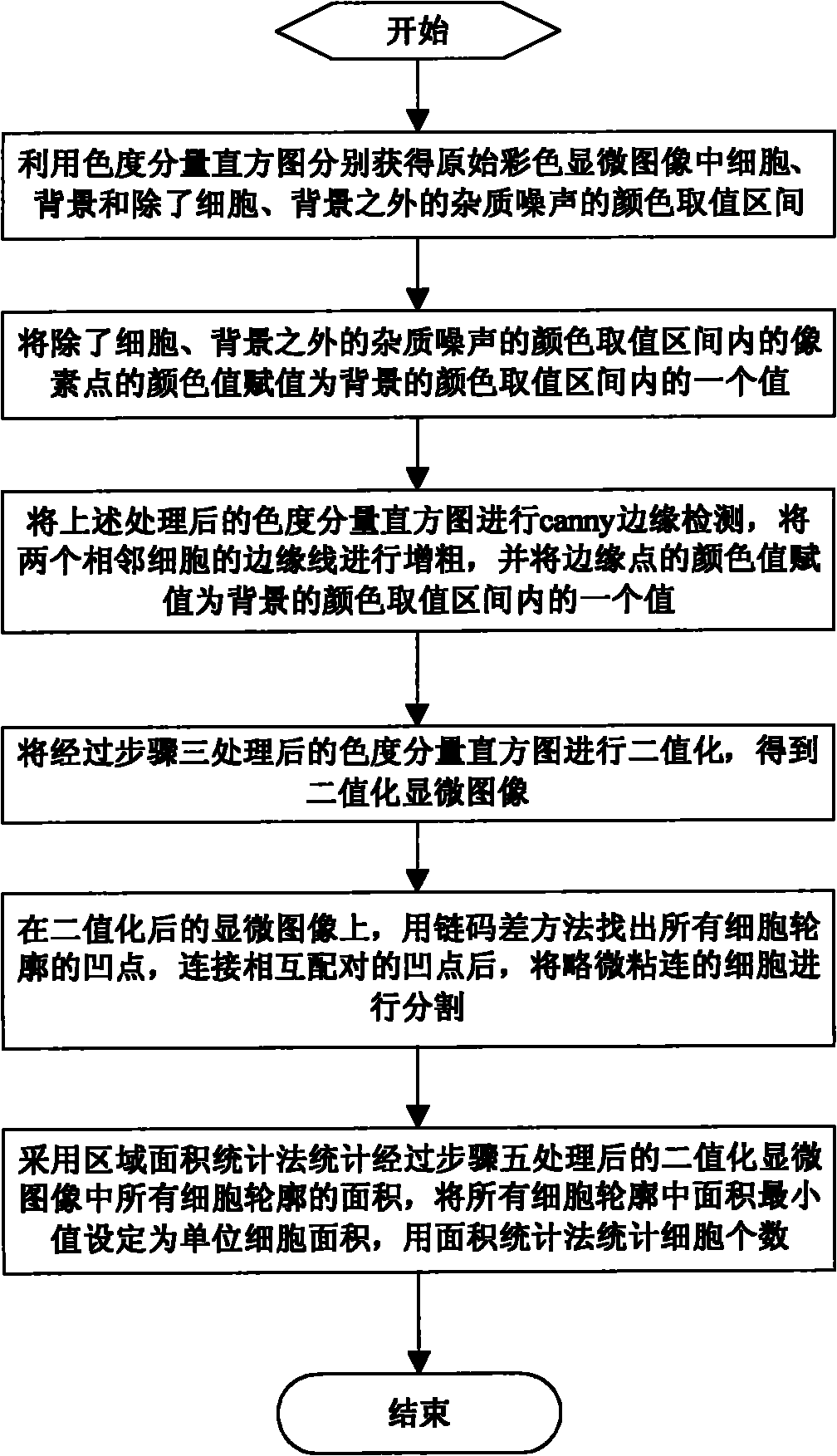Method for counting number of complex overlapping cells in microscopic image
A technology of microscopic image and statistical method, which is applied in the field of statistics of the number of complex cohesive cells in microscopic images, can solve the problems of seed point error, corrosion and expansion irreversible error, and difficult to find seed point for watershed segmentation, etc., to achieve small error , high precision effect
- Summary
- Abstract
- Description
- Claims
- Application Information
AI Technical Summary
Problems solved by technology
Method used
Image
Examples
Embodiment Construction
[0016] The present invention will be further described in detail below in conjunction with the accompanying drawings and embodiments.
[0017] The invention provides a method for counting the number of complex adhesion cells of a microscopic image, which comprises the following steps: figure 1 as shown,
[0018] Step 1, using the chroma component histogram to respectively obtain the color value intervals of the cells, the background, and the impurity noise other than the cells and the background in the original color microscopic image;
[0019] Through the analysis of color microscopic images, especially blood cell images, it can be seen that chromaticity information plays a very important role in the discriminative analysis of cells. If only the color images are converted into grayscale images, it will undoubtedly lose some useful information for classification and judgment. information, so this step directly processes the color image; the chromaticity feature is the most wi...
PUM
 Login to View More
Login to View More Abstract
Description
Claims
Application Information
 Login to View More
Login to View More - R&D
- Intellectual Property
- Life Sciences
- Materials
- Tech Scout
- Unparalleled Data Quality
- Higher Quality Content
- 60% Fewer Hallucinations
Browse by: Latest US Patents, China's latest patents, Technical Efficacy Thesaurus, Application Domain, Technology Topic, Popular Technical Reports.
© 2025 PatSnap. All rights reserved.Legal|Privacy policy|Modern Slavery Act Transparency Statement|Sitemap|About US| Contact US: help@patsnap.com



